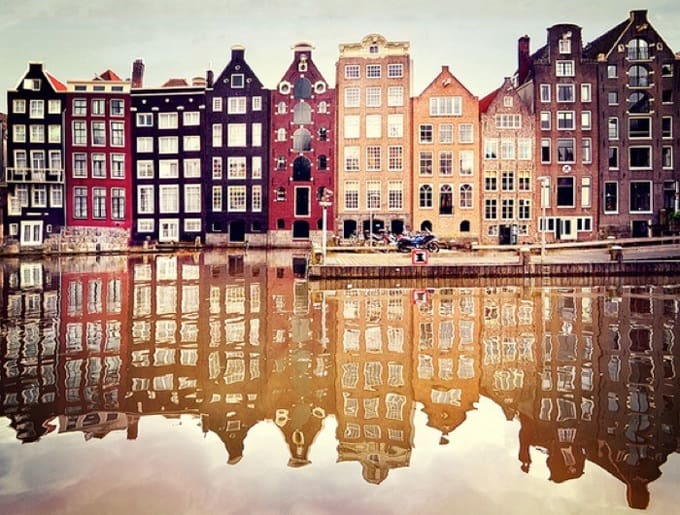The Iconic Gabled Houses of the 17th Century
Amsterdam's architectural landscape is famously marked by its gabled houses, which line the city's canals. These structures, primarily built during the Dutch Golden Age, feature narrow facades and ornate gables. The gables served both aesthetic and practical purposes, allowing for the hoisting of goods into the upper floors. The most common styles include the stepped, neck, and bell gables, each reflecting the wealth and status of the original owners.
The Influence of Art Nouveau in the Early 20th Century

As the 20th century dawned, Amsterdam embraced the Art Nouveau movement, known locally as Nieuwe Kunst. This style introduced organic forms and intricate details into the city's architecture. Notable examples include the Helios building on Spuistraat, with its flowing lines and floral motifs, and the Tuschinski Theater, which combines Art Nouveau with elements of Art Deco, creating a lavish interior that remains a cultural landmark.

Modernism and the Rise of Functionalism

The mid-20th century saw a shift towards modernism and functionalism, driven by the need for efficient housing solutions. The Amsterdam School, a local architectural movement, played a significant role during this period. Buildings like Het Schip, designed by Michel de Klerk, showcase expressive brickwork and sculptural forms, emphasizing both functionality and aesthetic appeal.
Contemporary Glass Structures and Sustainable Design
In recent decades, Amsterdam has embraced contemporary architecture, characterized by glass facades and sustainable design principles. The Eye Film Institute, with its angular glass structure, stands as a testament to modern architectural innovation. Similarly, the green-roofed NEMO Science Museum, designed by Renzo Piano, integrates sustainability with interactive public spaces, reflecting the city's commitment to environmental responsibility.
Preserving the Past While Embracing the Future
Amsterdam's architectural journey is a delicate balance between preserving its historical heritage and embracing modern innovation. The city's approach to urban development ensures that new constructions respect the historical context while incorporating cutting-edge design. This blend of old and new is evident in projects like the redevelopment of the Eastern Docklands, where modern residential buildings coexist with restored warehouses, creating a vibrant urban landscape.










